What to do if there is a well in the well: we study this
Many landowners probably heard from their neighbors not one terrible story about quicksands. However, people tend to exaggerate fears, therefore, in order to know this “enemy” “in person”, let's understand in more detail what to do with the floating water in the well, if he fell at the mine digging stage, and whether he is as dangerous as it is described .
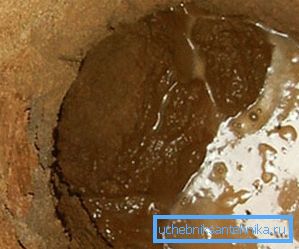
What is a quicksand?
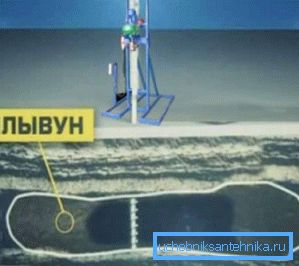
Every person who plans to build a well or a well in his area must be prepared for the fact that he may be caught in this process by flooding, as nearly 50% of private reservoir diggers encounter such a phenomenon, statistics have shown.
This natural phenomenon has not yet been fully studied, but it is precisely known that quicksands are water-saturated soils from 1 to 10 m thick, which may consist of sand, sandy loam or clay. They may also contain fragments of hard rock, colloidal particles and organic matter..
In their structure, they can be homogeneous and heterogeneous, fine or coarse-grained. In addition, they are divided into moving (true) and fixed (false) types.
True swelling is characterized by strong heaving during freezing, weak filtration of water, good buoyancy, cohesion during drying. In false swims, buoyancy is manifested at hydrodynamic pressure in the process of filtering water through them and under strong mechanical effects.
What is the danger of this phenomenon, and what problems it carries
The main danger of quicksand is directly in its property such as thixotropy (fluidity). For example, standing on it, at first glance it may seem that a person is resting his feet on a stone, but suddenly this support can suddenly take on the liquid state of water. Of course, this can lead to tragedy, since some quicksies, depending on the composition, have a fluctuation.
Note! If while digging the well with their own hands, the owner of the site came across a quicksand or suspects that this is he, then the work should be immediately stopped, because on the scales in this situation is worth the price of human life. For the resumption of work, it is desirable to call specialists, because they have safety instructions, and professionals know how to build a well in such a problem area.
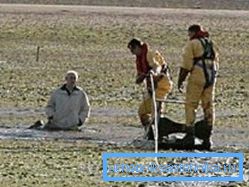
The thixotropy of quicksand makes the process of well construction itself more laborious. The thing is that at rest this mass of soil is under high pressure, which, at the slightest mechanical effects, begins to give drops, as a result of which even the quiescent at rest begins to move vertically upward under the pressure of water, thereby clogging the gutters with its particles.
This in turn will lead to low water levels (up to 1 m) in the well or well. Also, the owner of the plot this weight of the soil can bring and with the direct operation of the tank.
So, they include such significant problems as:
- Wells that are floaty require frequent cleaning.
- As a result of the mobility of the soil, the rings in the well often shift, which will lead to unsuitable water if the well is not repaired. Often the ring and all "float away."
- There may be significant seasonal variations in water level.
- The water in the well in the sea, if it is built illiterately, can even go away.
From everything written above, it turns out that this natural phenomenon brings a lot of trouble to the owner of a country site. But this does not mean that there is no way out in this situation. So, what to do if the well quicksand won?
What methods are used in the construction of wells on quicksand

The usual manual digging of a well when detecting this phenomenon is often ineffective, since new portions of sand will flow in again to the place of excavated soil. In this regard, in this case it is more expedient to use drilling equipment and accessories. So, a well is being built on the sea - what to do?
Experts advise using the following methods to combat such a natural phenomenon:
- Drilling using glue powder. This method keeps the walls of the mine from spreading, which facilitates the passage of the problem layer.
- Drilling "Abyssinian" reservoir. This technology of creating a well in the problem area consists in manually driving a metal pipe about 2.5 cm in diameter into the ground to a depth of 20 meters. This allows you to save pressure in the problem layer. If the well is dug in this way, the process of pumping water will occur closer to the surface (up to 7 m). In other words, the alluvial equipment cannot be installed in it, and you will have to be content with pumping water yourself.
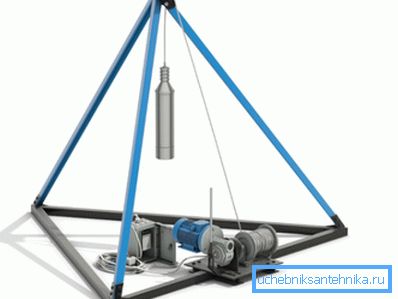
- Shock Drilling. The technology of this method, in which drilling occurs by lowering / raising the glass, allows the problem layer to pass right in the casing. In this case, the rings must interlock in such a way that they form a single monolithic structure.
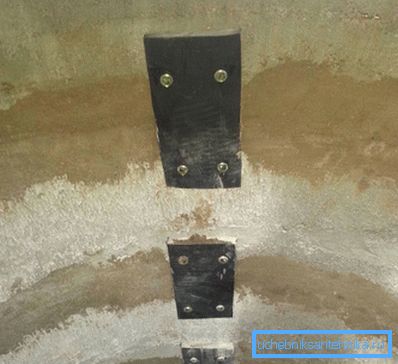
- The passage of quicksand using ramming dowels. This method is used for the construction of well log cabins, and it is effective when the aquifer is located directly beneath the quicksand. For its passage, the tongue (represented by parallel corners with pointed lower ends connected to each other), located between the guide and the spreader frame, is driven in (precisely along the plumb line) to a depth of no more than 40 cm with a wooden butt. is deleted. It should be ensured that the ends of the bars are not exposed. Next, the tongue is again buried in the soil. For the passage of more powerful problem layers using a tongue with oblique rows.
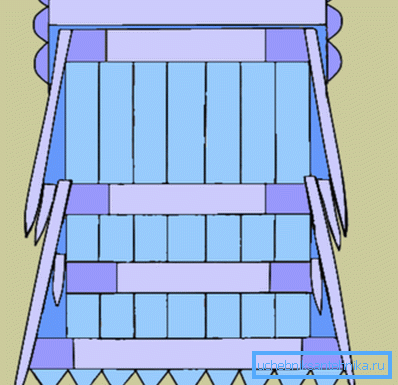
Note! In order to prevent the sand from filling the mine, after successfully passing the problem layer, it is necessary to equip the bottom of the structure with a shield and install a special bottom filter for the well on it.

Conclusion
In conclusion, it should be noted that in tanks built on quicksand during cleaning (1-2 times a year) it is not recommended to pump out water at once in large quantities (no more than 1-1.5 cubic meters per intake), otherwise it’s will result in shallowing, sanding, rupture of the rings or complete drainage.
Then it will be almost impossible to correct the situation. After reviewing the video in this article, you will still learn a lot of interesting things about this unusual natural phenomenon.